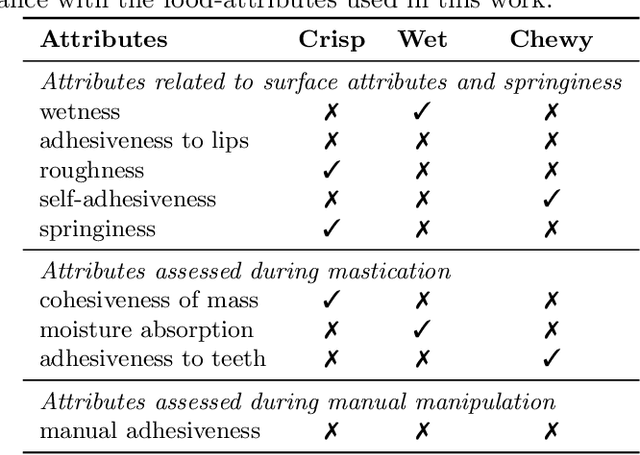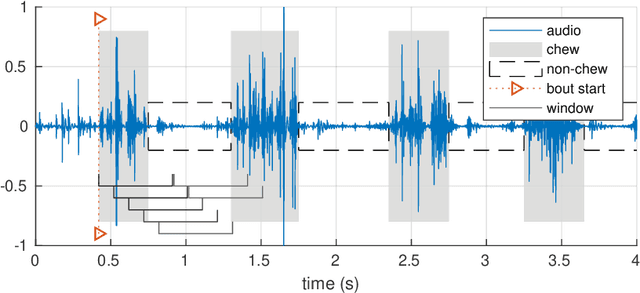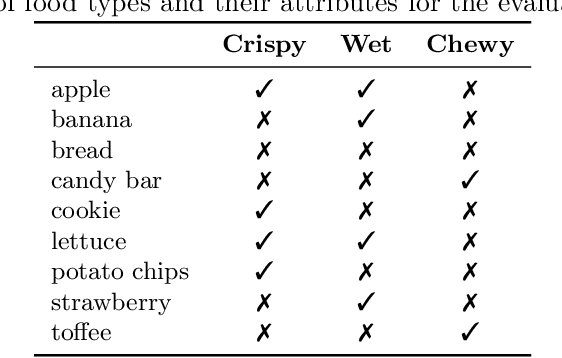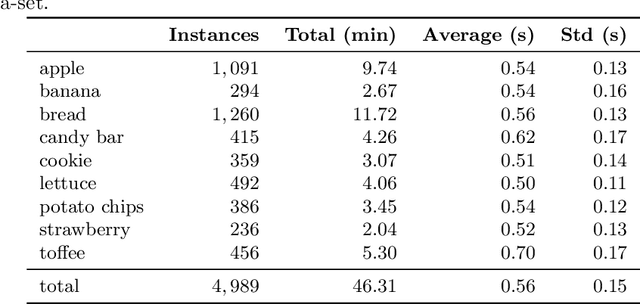Recognition of food-texture attributes using an in-ear microphone
Paper and Code
May 20, 2021



Food texture is a complex property; various sensory attributes such as perceived crispiness and wetness have been identified as ways to quantify it. Objective and automatic recognition of these attributes has applications in multiple fields, including health sciences and food engineering. In this work we use an in-ear microphone, commonly used for chewing detection, and propose algorithms for recognizing three food-texture attributes, specifically crispiness, wetness (moisture), and chewiness. We use binary SVMs, one for each attribute, and propose two algorithms: one that recognizes each texture attribute at the chew level and one at the chewing-bout level. We evaluate the proposed algorithms using leave-one-subject-out cross-validation on a dataset with 9 subjects. We also evaluate them using leave-one-food-type-out cross-validation, in order to examine the generalization of our approach to new, unknown food types. Our approach performs very well in recognizing crispiness (0.95 weighted accuracy on new subjects and 0.93 on new food types) and demonstrates promising results for objective and automatic recognition of wetness and chewiness.
 Add to Chrome
Add to Chrome Add to Firefox
Add to Firefox Add to Edge
Add to Edge